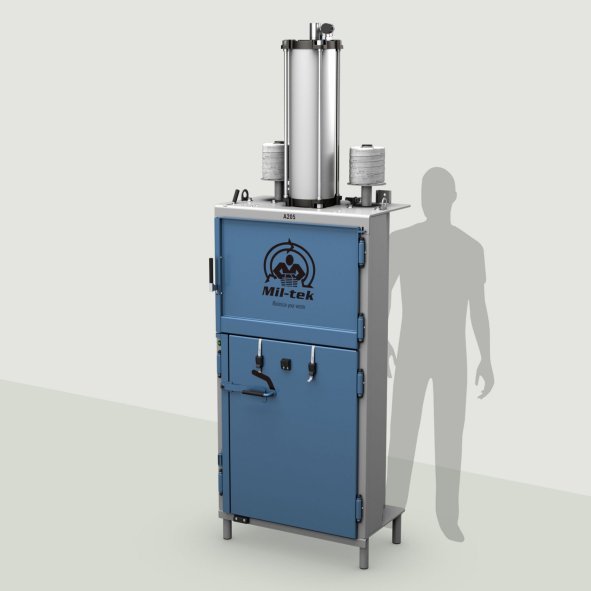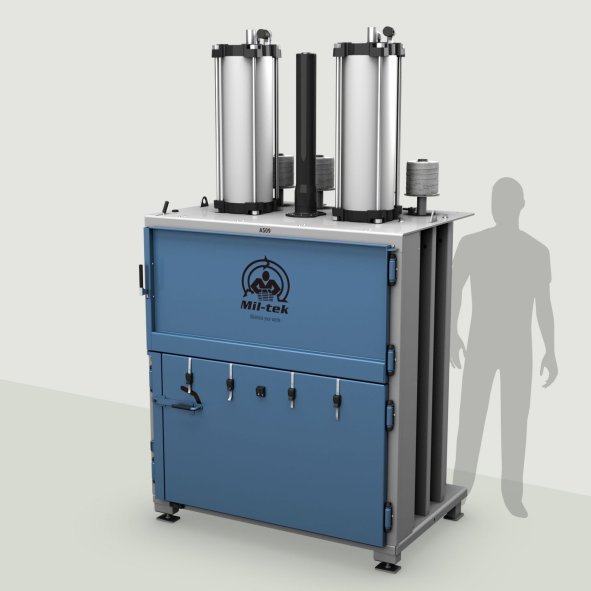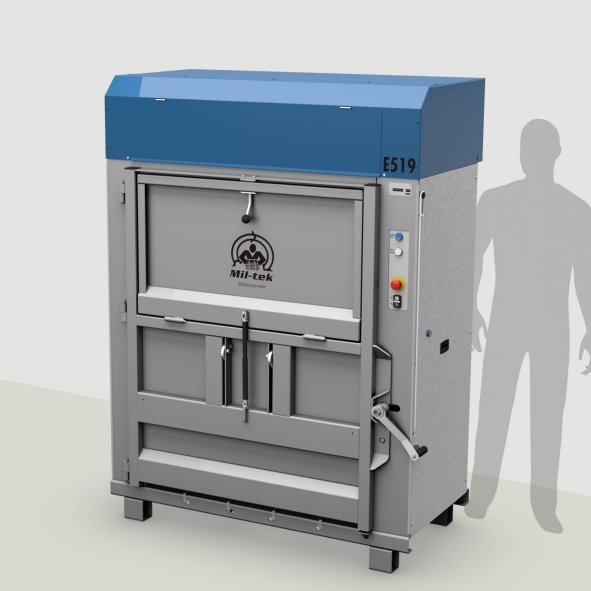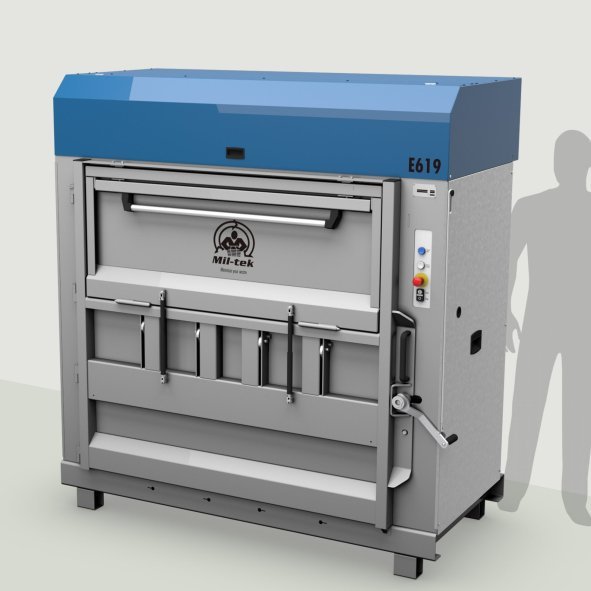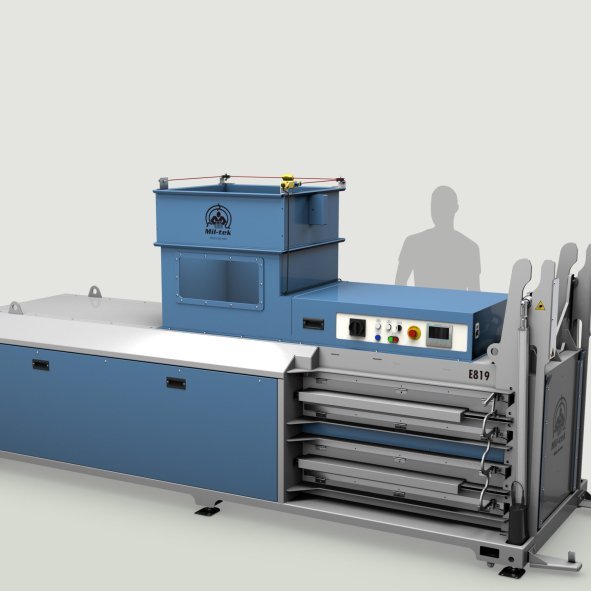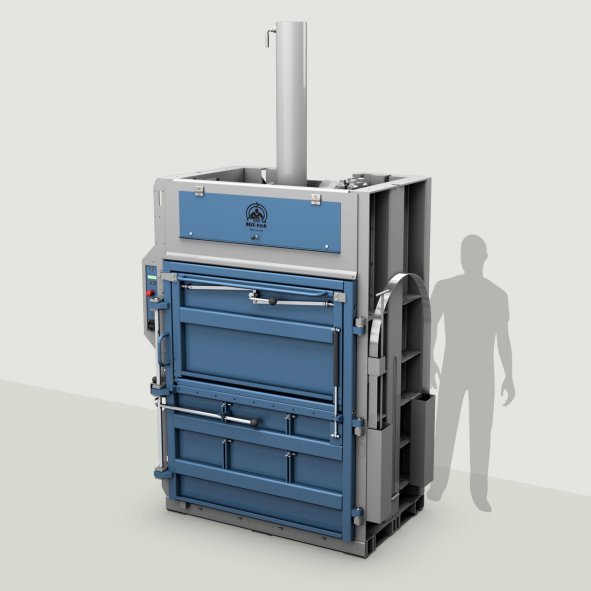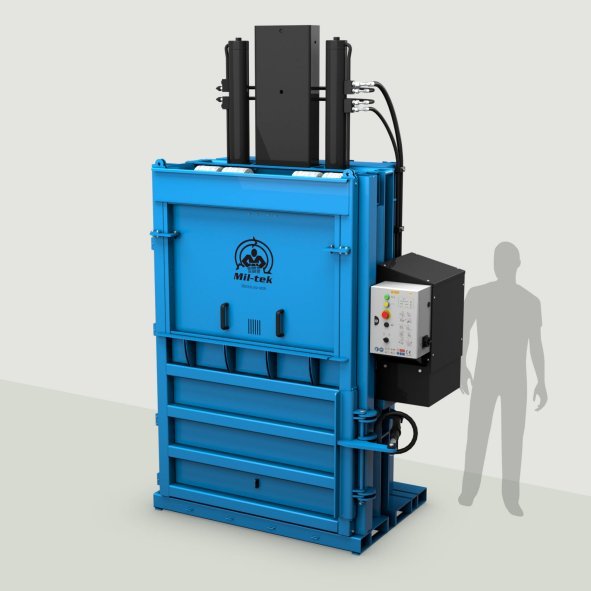
Cardboard disposal
Cardboard is everywhere, and how we dispose of it matters. Proper cardboard disposal reduces waste, supports recycling, and saves costs. In this guide, we’ll show how Mil-tek’s solutions make it simple.
Cardboard disposal guide
Cardboard is everywhere, from the box that delivered your latest online order to the packaging that keeps products safe on store shelves. But what happens after it’s used can have a huge impact on both the environment and your bottom line.
Cardboard disposal is the process of collecting, handling, and recycling used cardboard to prevent waste, reduce landfill use, and unlock its full recycling potential. With cardboard being a staple in retail, e-commerce, manufacturing, and shipping, proper disposal isn’t just good practice, it’s essential.
Let’s dive into the real-world practice of cardboard disposal.

Why proper cardboard disposal matters
Environmental impact
Cardboard is one of the most recyclable materials available, and when disposed of correctly, it can be reprocessed into new products without the need for virgin pulp. This reduces deforestation, conserves energy, and lowers carbon emissions. However, when cardboard is improperly discarded – contaminated with food waste, mixed with general rubbish, or left to degrade in poor conditions – it often ends up in landfill. This not only wastes a valuable resource but also contributes to unnecessary landfill growth and environmental harm.
Legal and regulatory requirements
In the UK and EU, waste management regulations require businesses to separate recyclable materials from general waste. This includes cardboard. Failing to meet these standards can result in warnings, fines, or other penalties, especially for companies producing significant volumes of packaging waste. Proper disposal practices ensure compliance, helping businesses avoid costly legal issues.
Cost savings and operational efficiency
Efficient cardboard disposal can lead to significant cost savings. By compacting and baling cardboard, businesses reduce the frequency and cost of skip collections, and in some cases, can even generate revenue by selling clean, baled cardboard to recyclers. Beyond financial benefits, a structured disposal system improves workplace tidiness, streamlines operations, and supports a cleaner, safer environment for staff.

Common cardboard disposal methods
General waste bins (not recommended)
Placing cardboard in general waste bins is the least sustainable option. It typically leads to increased landfill use, higher disposal costs, and the loss of valuable recycling opportunities. Once mixed with general waste, cardboard is often contaminated, making it unsuitable for recycling. This method is neither environmentally friendly nor cost-efficient, and in some regions, it may also breach waste management regulations.
Municipal recycling programs
For smaller volumes of cardboard, local council or municipal recycling programs can be a practical choice. Businesses place flattened cardboard out for collection according to the local schedule. While convenient, this approach often comes with limitations such as restricted collection days, volume caps, and inconsistent pickup reliability. For companies generating moderate to high cardboard waste, these constraints can quickly become problematic.
Commercial recycling contracts
Larger businesses, or those producing a steady stream of cardboard waste, often benefit from commercial recycling contracts. In these arrangements, recyclers collect cardboard in bulk, often requiring it to be compacted or baled for efficient transport. While this method may involve some upfront investment in equipment like balers, it offers advantages such as regular pickups, reduced storage issues, potential revenue from clean cardboard bales, and improved overall waste management efficiency.

Best practices for cardboard disposal 💡
Segregation and flattening
The first step toward efficient cardboard disposal is proper segregation. Always separate cardboard from general waste to prevent contamination from food, liquids, or other recyclables that could reduce its recycling potential. Flattening boxes before collection or baling not only saves valuable storage space but also makes handling and transportation easier and more cost-effective.
Keep it dry and clean
Cardboard’s recyclability is significantly reduced if it becomes wet or contaminated with grease, food, or chemicals. Store it in a dry area and avoid placing it near waste streams that could cause contamination. Clean, dry cardboard is more attractive to recyclers and yields better quality recycled products.
Regular scheduling
Implementing a consistent disposal or recycling schedule helps prevent cardboard buildup, which can create clutter, pose safety hazards, and reduce operational efficiency. Align your pickup or baling routines with your business’s waste generation patterns to maintain a tidy and organized workspace.
Employee training
A successful cardboard disposal process relies on employee awareness. Train staff to identify recyclable cardboard, flatten it correctly, and deposit it in the designated bins, cages, or balers. Clear signage and ongoing reminders help reinforce good habits, ensuring your recycling process remains effective and sustainable.
How Mil-tek Improves Cardboard Disposal Efficiency
With balers for cardboard
Mil-tek cardboard balers are designed to compress loose cardboard into dense, easy-to-handle bales.
By drastically reducing the volume of waste, these machines make storage and transport far more efficient. Businesses can benefit in multiple ways: fewer waste collections mean lower transport costs, and clean, compacted bales can often be sold to recyclers, creating an additional revenue stream.
The uniform bale size also simplifies stacking and storage, keeping work areas safe and tidy.

Compactors and other solutions
Mil-tek offers a range of models tailored to different volumes and operational needs, from small units for shops and offices to heavy-duty systems for warehouses and manufacturing plants.
We ensure that businesses of all sizes can optimise their cardboard disposal and waste handling processes.

Case example!
A UK-based construction company was struggling with overflowing skips and large volumes of cardboard and plastic waste, driving up disposal costs and slowing operations.
After installing a Mil-tek baler, they cut waste volume by 75% in just one week, reduced skip usage, freed up space, and improved workflow – all while diverting significant recyclable material from landfill.

Cardboard recycling vs. disposal: Key differences
Recycling
Recycling cardboard involves collecting, sorting, and transporting it to a dedicated facility, where it’s pulped, cleaned, and processed into new paper-based products. This process keeps valuable fibres in circulation, reducing the demand for virgin materials and supporting the principles of a circular economy. By recycling, businesses and individuals contribute to lowering carbon emissions, conserving forests, and extending the lifecycle of the material.
Disposal
Disposal, in contrast, generally means that cardboard is sent to landfill or incinerated, especially if it’s mixed with general waste or contaminated with food and liquids. This approach not only wastes a recyclable resource but also increases waste management costs and puts added strain on the environment through methane emissions from landfill or pollution from incineration.
Why recycling is preferable
Recycling delivers clear advantages: it reduces environmental impact, conserves natural resources, and can even generate revenue from the sale of clean, baled cardboard. Proper recycling also helps businesses meet regulatory requirements and enhance their sustainability credentials. By choosing recycling over disposal, organisations take a proactive step toward waste reduction, cost efficiency, and a greener future.

Frequently asked questions (FAQ)
Can all types of cardboard be recycled?
In most cases, yes. However, wax-coated, laminated, or heavily soiled cardboard (such as greasy food boxes) may require special handling or alternative disposal methods. Read more about how you prepare cardboard for recycling.
Is a baler necessary for cardboard disposal?
Not always, but using a baler can drastically reduce the volume of cardboard waste and improve storage efficiency. For businesses producing large quantities, it can also increase recycling profits.
How often should I bale my cardboard?
This depends on your output. High-volume operations may bale daily, while smaller businesses may find weekly baling sufficient.
Is training required to operate a Mil-tek baler?
Yes. Mil-tek provides straightforward, essential training to ensure safe, efficient, and compliant operation of all baler models.
Ready to transform your cardboard disposal?
By segregating cardboard properly and using equipment like balers or compactors, businesses can significantly cut waste volume, streamline operations, and even generate additional revenue from recycling.
To see how Mil-tek’s range of cardboard balers and waste management solutions can work for your business, contact us today!

